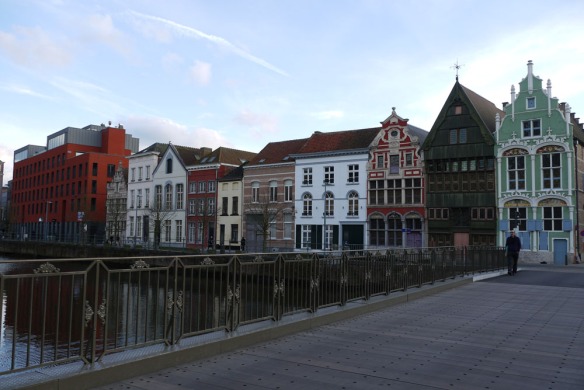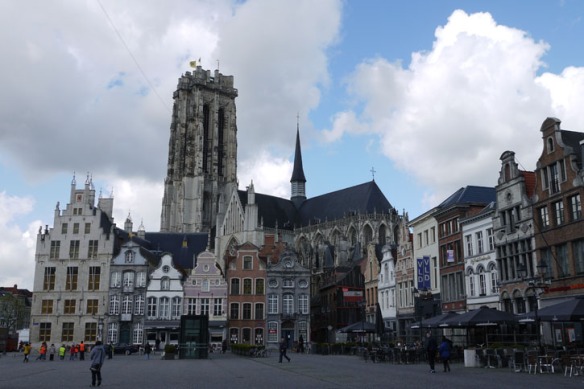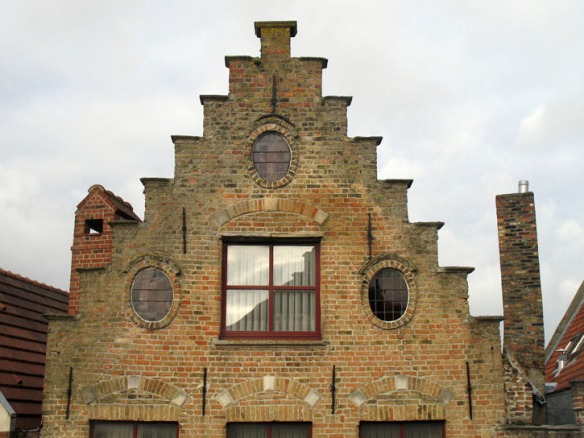Last Christmas Mr C and I didn’t really want anything in the way of presents so we decided to treat ourselves to a relaxing weekend away instead. This ruled out flying because that would mean several (non-relaxing) hours in an airport waiting to fly…
As luck would have it an email arrived from the Belgian hotel chain that we used when we stayed in Bruges. It gave us inspiration and I fell in love with one of the hotels in the chain. The Hotel, Martin’s Patershof, is a converted Church. I researched the hotel’s town, Mechelen (Malines in French rather than Flemish), and found that it had many things of interest. The guidebooks describe it as a beautiful medieval town, with charm and outstanding architectural treasures.
We decided that the best way to travel was by train. The ‘end to end’ journey could easily be booked via the Eurostar site. As well as travel to Brussels by Eurostar, we also booked travel by rail to London and onward from Brussels.
The journey to and from Mechelen by train including Eurostar was enjoyable and relaxing. We had the luxury of being served with meals and drinks on both inward and outward journeys. On arrival in Mechelen we quickly unpacked our bags before setting off to explore the town. During my stay one thing I couldn’t help but notice was the abundance of bicycles both with and without riders. I will always remember Mechelen as the town of bicycles. This inspired me to purchase a Dutch style bicycle shortly after I returned home from my travels.
The hotel lived up to expectations. Architectural features and stained glass windows are prominent throughout the hotel and our room had a stained glass window and stone pillars. The breakfast room is quite stunning being situated in what was the choir of the church. The breakfast buffet was one of the best I have ever seen. There was even a decadent option of having a complimentary glass of Cava; I decided not to indulge so early in the morning.
Although this hotel is no longer a place of worship there are many historic churches still in use and eight are promoted as especially worthy of a visit. St Rumbold’s Cathedral with its wonderful architecture, artworks and stained glass windows was on our ‘to visit’ list but it was difficult to decide which others to include. We settled on the Beguinage Church (which we found to be full of amazing artworks and treasures), Church of our Lady Hanswidj (whilst there we learned that it would shut for renovations in just two weeks’ time for four years), and the Church of our Lady across the Dyle. The custodians of each of the churches were very proud of their churches and keen to point out the special features of each to us. Being English we were somewhat of a novelty to them, with Mechelen not being an obvious choice for British travelers.
Mechelen played a sobering part in the history of WW2 so the Kazerne Dossin museum and military barracks were also on our ‘to visit’ list. The barracks and museum serve as a permanent history and memorial to the Jews who were held there awaiting deportation. I found the museum thought provoking. It serves as a poignant reminder that atrocities still occur today and invites the visitor to ask questions and look for answers. Alongside the barracks is a restored railway goods wagon that had been used to transport the Jews from the barracks to Auschwitz Birkenau.
We visited many other things of interest; the garden of the former palace of Margaret of Austria (Belgium was, at one time, a part of the Holy Roman Empire, which was ruled by the Austrian Habsberg dynasty), an art exhibition of the work of Rik Wouters which is housed in the Schepenhuis, the toy museum, the Beguinages and we strolled through the botanic garden to see the ancient wooden fulling mill and also along the River Dyle passing the Haverwerf and three noticeable houses from the sixteenth and seventeenth century. We were even lucky enough to find ourselves next to the Grote Markt when the annual carnival was in full flow. The town has its own brewery as do many towns in Belgium, although we didn’t go inside we passed it on more than one occasion as we explored Mechelen.
No visit to Belgium is complete without sampling some chocolate. We came home with a box for ourselves and some as gifts. The lady in the shop guided us through the different options and helped us to choose a bespoke collection for someone who has nut allergies. The delicious chocolates didn’t last long…
I enjoyed my stay in Mechelen and the Hotel Patershof; there is more than a passing chance that I may return there one day.
You can read the unabridged version of my travels in the following links; Mechelen Day One, Mechelen Day Two, Mechelen Day Three, Mechelen Day Four and Mechelen Day Five.
The best place to find out about the attractions of Mechelen is the official tourism site.








